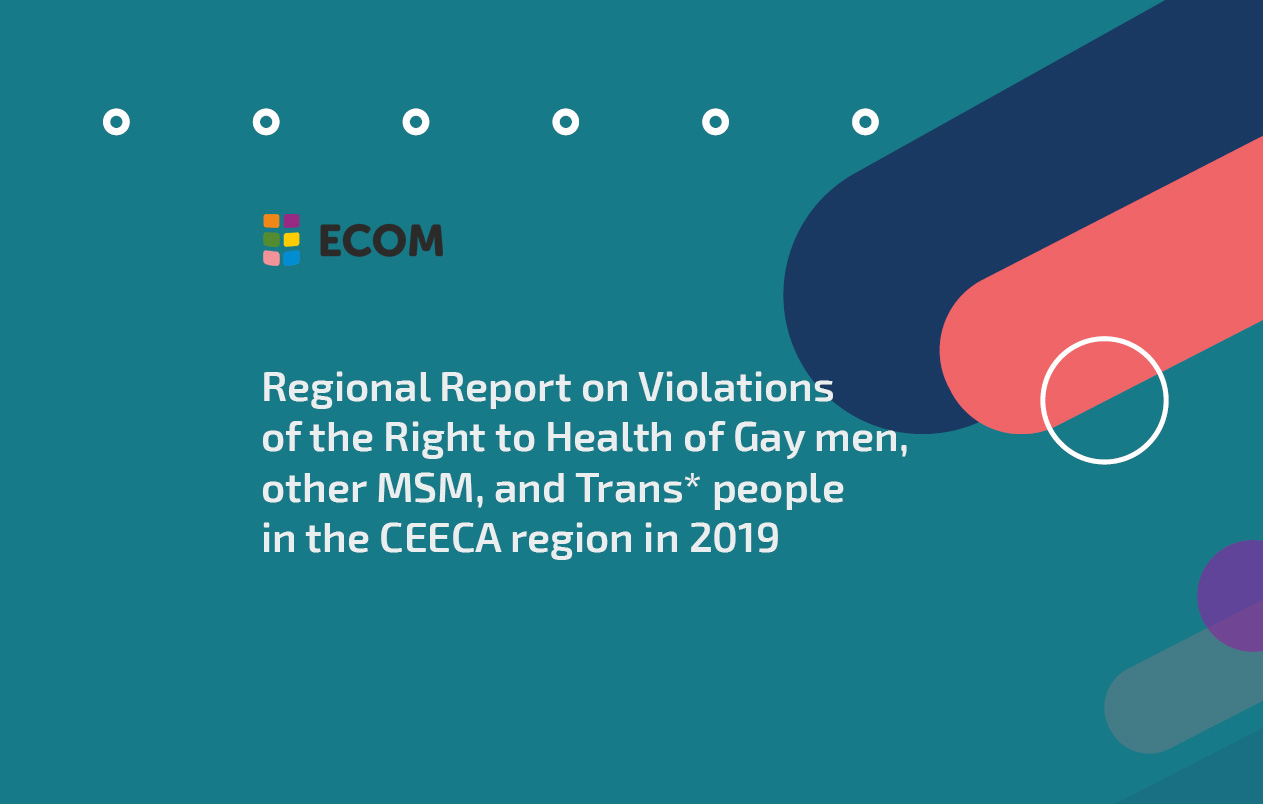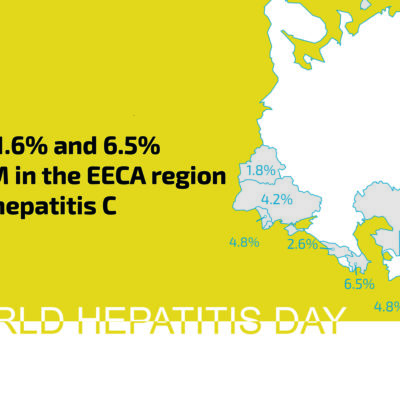The insufficiency of prevention programs, funding, and support from countries has led to an increase of HIV-positive MSM, higher syphilis prevalence, the failure of the cascade of access to the continuum of medical services, and to the insufficient coverage of antiretroviral therapy in the countries of Central and Eastern Europe and Central Asia.
The global community commemorates December 1, World AIDS Day. In turn, the Eurasian Coalition on Male Health (ECOM) notes that according to data obtained between 2015 and 2018, the epidemics of HIV and other sexually transmitted diseases continue to develop among men who have sex with men (MSM) in Central and Eastern Europe and Central Asia (CEECA).
The level of coverage by HIV prevention, diagnosis, and treatment programs among key populations, in particular MSM and trans people, does not allow for a significant impact on the HIV and HIV/TB epidemics in the region. EECA remains the only region in which the number of new HIV infections is increasing, which is a consequence of the lack of access of key populations to the full package of HIV prevention services recommended by the WHO. The EECA region as a whole represents the worst situation in the world with respect to the “90-90-90” targets; in other words, it is lagging behind international targets regarding the percentage of PLH who know their HIV status, receive treatment, and who have an undetectable viral load.
The epidemiological and monitoring systems available in most countries of the region do not allow for the development of cascades for MSM and trans people. At the same time, it is known that the access of key populations to antiretroviral therapy in most countries of the region remains extremely low. Rapid HIV testing in low-threshold centers is often organized in such a way that only half of MSM who test positive for HIV then go to medical centers to confirm their diagnosis.
According to data from regular population-based studies of groups vulnerable to HIV, six countries in the EECA region (Armenia, Belarus, Georgia, Kazakhstan, Kyrgyzstan, and Moldova) are experiencing a steady increase in the proportion of HIV-positive MSM. A two-fold increase in the prevalence of HIV among MSM was found in Belarus (9.8% in 2017 versus 5.7% in 2015), Kazakhstan (2017—6.2%, 2015—3.2%), and Moldova (Chisinau: 2016– 9.0%, versus 5.4% in 2013).
The prevalence of syphilis also remains problematic. In most countries of the region, the prevalence has remained stable (from 2 to 8%), however, a worsening situation has been observed in several countries with an increasing prevalence: in Belarus from 2.4% in 2013 to 4.7% in 2017, in Kazakhstan from 12.8% in 2015 to 19.7% in 2017, and Kyrgyzstan (2013 – 7.9%, 2016 – 10.8%).
These indicators alone are enough to indicate that the prevention measures and activities taken are insufficient.
Global initiatives, such as the “90-90-90” strategy, are aimed at strengthening the fight against HIV. This implies, in particular, the effective (90%) coverage of vulnerable groups with testing and the prescription of antiretroviral therapy immediately after the diagnosis of HIV. According to ECOM data, in most countries of the region (5 of 14 for which there is data), less than 60% of MSM are covered by testing, which is clearly insufficient for the effective control of the epidemic.
Updated data shows that out of 9 countries of the region, only two (Belarus and Tajikistan) have achieved the stated goal of providing coverage with ART to at least 73% of MSM living with HIV. In the remaining countries, this figure ranges from 2% (Kyrgyzstan) to 66% (Lithuania). At the same time, it should be taken into account that different countries may take a different approach to developing a cascade of access to the continuum of medical services.
In different countries of CEECA, there are different levels of coverage of MSM by prevention services and different trends. For instance, in Azerbaijan, this indicator is stable at a low level, in Belarus, Kazakhstan, and Ukraine, the coverage level is between 40 and 60%, in Tajikistan, it reaches 89%, while in Kyrgyzstan, a reduction to 18% was observed. In order to increase coverage, it is necessary to develop new approaches for attracting MSM and trans people to prevention programs led by community organizations, as well as to prevent discrimination and human rights violations on the basis of sexuality and gender identity.
It is necessary to know the population sizes of vulnerable groups when planning relevant national budgets. However, special studies to determine population sizes are regularly carried out only in Georgia, Kyrgyzstan, Tajikistan, and Ukraine. For most countries, data on population size estimates are outdated (i.e. the studies were carried out 5 or more years ago).
“Along with the growing prevalence of HIV, funding from international sources is declining; the Global Fund, which is currently the main source of funding for programs for MSM, is encouraging countries to switch to national funding of HIV programs. However, the governments of countries of the region are refusing to fund targeted programs aimed at MSM and trans people, arguing firstly that these groups do not have a significant impact on the growth of the HIV epidemic as a whole in these countries, and, secondly, that prevention and treatment programs targeting the general population are also effective for MSM and trans people” – remarked Vitaly Djuma, Executive Director of ECOM.
“Changing the position of governments can only be done by mobilizing LGBT community organizations and activists for active advocacy, and by providing them with qualitative data on the impact of MSM and trans people on the epidemic and on the effectiveness of existing interventions,” – added Djuma.
Despite efforts by individual groups and community networks to liberalize national legislation affecting MSM and trans people, a discriminatory policy approach towards these groups is still dominant in EECA. Laws and policies against MSM and the legal uncertainty of implementing effective HIV prevention programs among MSM and trans people remain the main barriers both to the effectiveness, as well as to the sustainability of programs. The prospect of obtaining national funding for prevention programs under these conditions seems to be unpromising in a number of CEECA countries.










